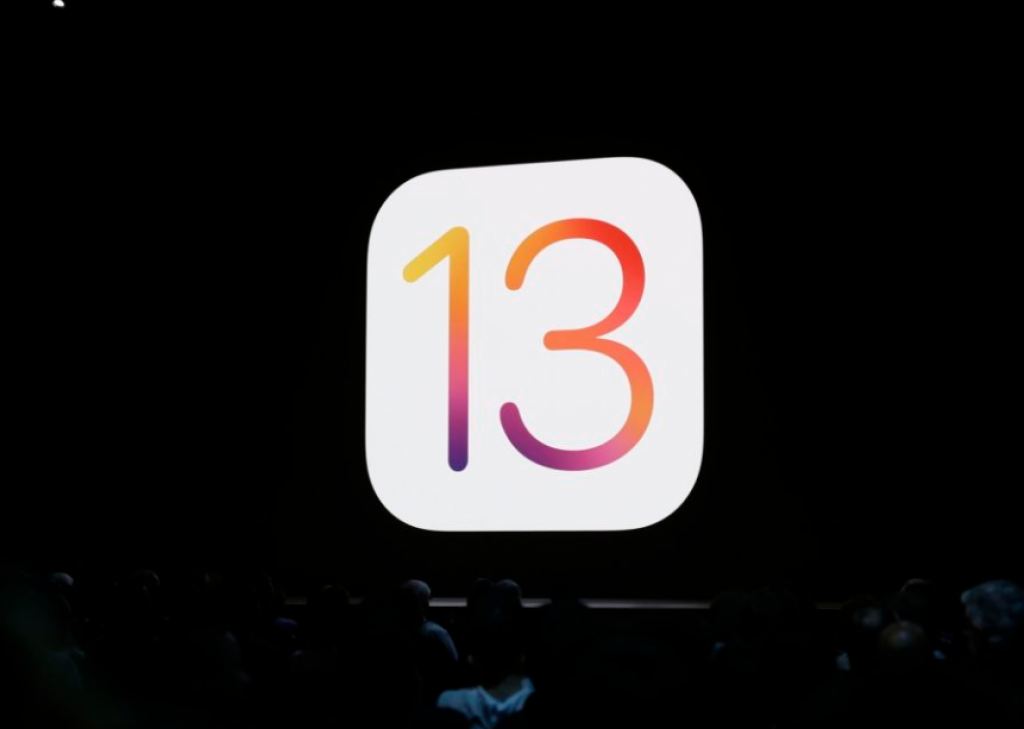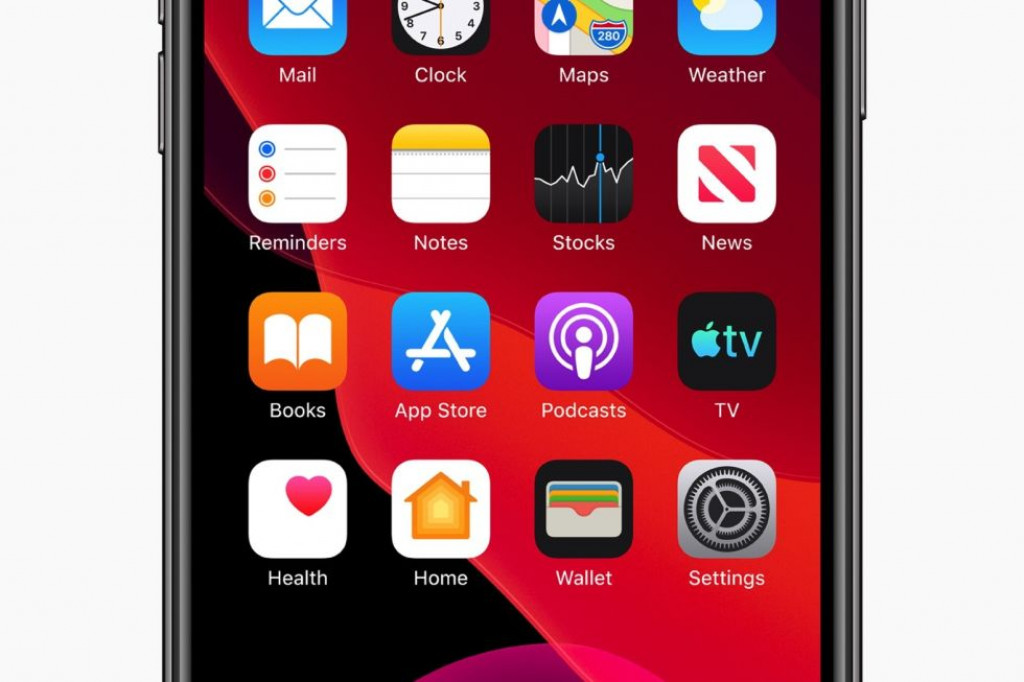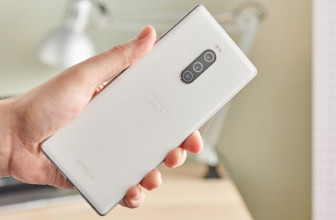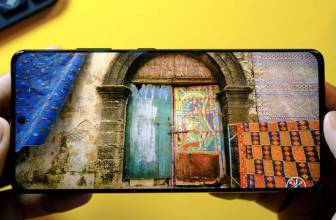
iOS is Apple’s most important piece of software, and as such the company is kicking off WWDC 2019 with a first look at iOS 13. Apple’s senior VP of software engineering Craig Federighi is taking us through the new software — and while last year’s update focused largely on performance, it sounds like iOS 13 will include a ton of user-facing features and updates to Apple’s own apps.

That said, Federighi kicked things off by touting improved performance in iOS 13, as well. Face ID unlocks will be 30 percent faster. Apple is also changing how it packages apps — downloads will be 50 percent smaller, while updates will be 60 percent smaller. An even bigger deal is that apps will launch about twice as fast, which could be a seriously notable improvement for everyone.
Apple quickly moved on to what’s iOS 13’s most-expected feature: dark mode! (It’s such a big deal that it even got its own video.) As you’d expect, the interface changes everywhere across the OS, including your widgets and keyboard. And Apple slipped in a new keyboard feature at the same time during the dark mode demo: there’s a swipe-able keyboard just as Android has had for years now.

A bunch of Apple’s built-in apps are getting notable updates, including Reminders, Notes, Mail, Maps and more. Apple is blowing through everything here to be totally honest, but Reminders is the one that’s being the most revamped. To-do lists can have a top-level reminder, you can tag people in reminders via a new iMessage integration, and there’s a new “home” layout that shows a lot more information than it did before.
Maps is also getting a major update, with far more detail on its maps than used to be there. Obviously Maps had a rocky launch, but it’s been significantly better in recent years. But now there’s far more visual detail, and Apple’s also revamping its interface as well. It’s easier to save and tag your favorite places, something the app really needed. There’s also a new feature called “look around” which basically is Apple’s take on Google Street View.
Following Maps, Federighi shifted to privacy, specifically location services. There are more granular location preferences — you can make it so an app can only see your location one single time, and it’ll have to ask you again next time it needs it. Apple is also building background tracking alerts that’ll give you more details on how exactly an app is using your location.
Apple is also discussing social logins, like Facebook and Google, that are commonly used to log into apps and services. Apple is developing its own sign-in button that uses Face ID to authenticate you without giving any information to the service that you’re logging in to. Apple will allow apps to request your email, but it’s up to you whether or not they get that information. You can share your regular email, or you can have Apple generate a random email that’ll forward to your regular email, keeping that information secure. Those addresses are linked to the app you’re using, and you can disable that access at any time.
There are some privacy improvements coming to Apple’s HomeKit, as well. HomeKit secure video is a new interface that analyzes video recorded by cameras on your devices, instead of in the cloud, and HomeKit will work on routers from Linksys, Eero and providers like Charter-Spectrum.
As for messages, Apple is adding makeup and other new customization features to the custom “memoji” that the company launched last year. These go along with a new contact card you can tie to your iMessage account so that when you message someone for the first time, they’ll get your actual contact info instead of just a phone number.
More broadly, Memoji will work on all Apple devices with an A9 chip or later — they won’t be animated (you still need a Face ID camera for that), but they will be available as a sticker pack that works in iMessage as well as plenty of other third-party apps.
Moving on to photos, Apple is releasing new portrait lighting feature that simulates moving lights closer or further away from your subject, as you might in a studio. More notably, Apple is redesigning the UI for editing photos in its app. Apple’s also adding a bunch of new editing effects like white balance and vignette to iOS, as well — all in all, this seems like a much more comprehensive editing suite than the phone has had before. And these new effects can be applied to videos, as well.
Apple is also revamping the browsing experience — it’s going to use machine learning to remove duplicate photos, clutter like screenshots and receipts and make the browsing view a lot more pleasant. The new browsing interface lets you pinch-to-zoom to see more or less of your library, and there’s a new “day” view that makes some nice-looking layouts as you browse through everything you shot on a single day, with duplicates and clutter removed.
There’s also a “months” view that organizes the most significant moments of your month into cards, that you can then tap into to see more details. And Apple is using machine learning to provide context and give you more relevant results in the “years” view — it can see all of your images from past WWDC events, if you’re at it right now, for example. Skipping back to a child’s birthday will show you images of the kid over the years. All in all, it looks like Apple’s trying to get a lot smarter about surfacing images that matter to you as our libraries grow more and more.
Next up is Siri, and how it plays into other Apple products like CarPlay, AirPods and the HomePod speaker. When you’re wearing AirPods, Siri can read back your messages instantly, as they come in, and you can automatically reply as well. It works with Apple’s messages app or any third-party messaging app as well, if they use SiriKit to enable it. Another new feature is Audio Sharing, which lets you share the audio from your phone with someone else by tapping your phones.
As for HomePod, it now has Apple’s HandOff technology — bringing your phone close to the speaker will move the audio from your phone to the HomePod, whether it’s music, a podcast or a phone call. Siri also now has support for 100,000 (!) radio stations. You can just ask Siri to play the station you want to hear and it’ll go live.
HomePod is also finally getting voice recognition so that you can personalize your experience there. It’ll be able to differentiate between you and your partner when you ask for your music library, send messages, add reminders and so forth. Before, HomePod only worked with one single Apple ID, which wasn’t the most secure, so this is a major improvement.
The Siri shortcuts app will now be installed by default, and feature some new suggestions to make it easier for users to build their own multi-step shortcuts. You can also edit what third-party apps are using Siri shortcuts.
But perhaps most notably, Siri’s voice is getting a major update. Using a technology called “neural text-to-speech,” Siri sounds a lot smoother and less robotic than before. Apple’s made these improvements a few times over the year, and it sounds better than ever now (provided you get it to do what you want, of course).
Finally, Apple moved on to the iPad, which is getting its own specialized software called iPadOS, something Apple accidentally teased just before the keynote. As expected, Apple is introducing significantly improved multitasking. Single apps can be split into multiple views, there’s an “app expose” view that shows everything you’re working on in a single app, and slide-over lets you more quickly flip between apps like you’re using an iPhone. It’s a major redesign, and you can read more about it here.
One thing Apple didn’t announce today is what devices would work with iOS 13 — iOS 12 went back as far as 2013’s iPhone 5S, but it’s not clear if iOS 13 will work with that aging phone. We’ll have to wait until September, when Apple usually releases iOS updates.
Source: engadget.com









































